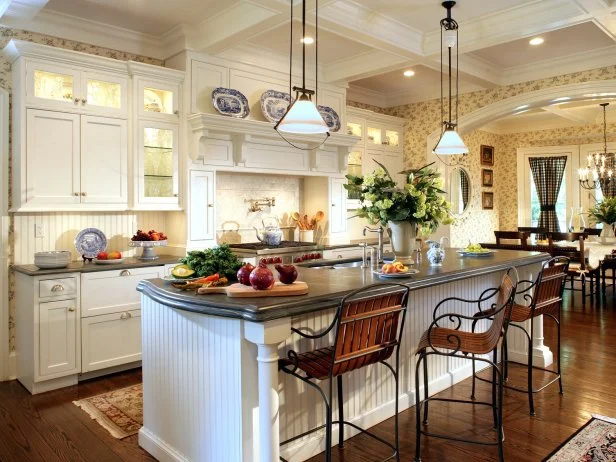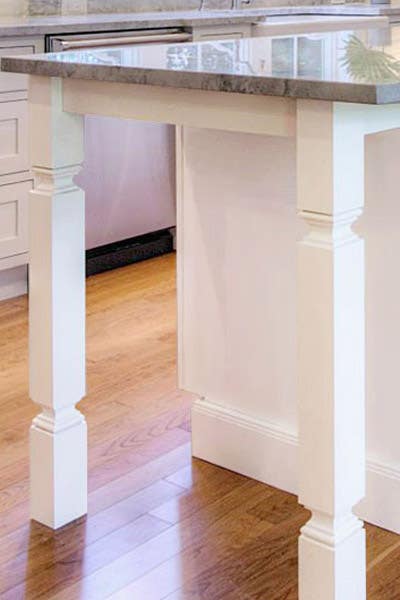Long Lasting and Fashionable Choices for High-Quality Legs For Kitchen Island
Necessary Aspects to Think About When Choosing Legs For Kitchen Island
Choosing the suitable legs for a kitchen island involves a mindful evaluation of several factors that can dramatically affect both performance and aesthetic allure. Among these, the choice of product plays a critical role in making certain resilience, while the layout needs to complement the existing style. In addition, considerations such as elevation and weight assistance are essential for security and comfort. As we explore these aspects, it becomes clear that each choice can have far-reaching effects for the overall cooking area experience. What nuances should be thought about in each of these categories to accomplish the perfect equilibrium?
Product Options
When selecting legs for a kitchen area island, recognizing the various material choices is crucial for achieving both aesthetic charm and architectural integrity (Legs For Kitchen Island). The choice of material substantially affects not just the resilience of the island however additionally its total layout and functionality
Wood is a prominent option, using heat and versatility. Solid hardwoods, such as oak or maple, offer stamina and can be discolored or repainted to match the kitchen area decoration. Steel legs, usually made from stainless steel or wrought iron, contribute a industrial and modern feel while ensuring resilience and stability. These materials are resistant to put on and can sustain significant weight, making them excellent for bigger islands.
An additional choice is engineered materials, like MDF or plywood, which can be extra cost-efficient while still supplying an array of finishes. Nevertheless, they may not provide the exact same degree of stability as strong wood or steel. Products such as acrylic or glass can create a modern look, though they might need additional assistance to guarantee security.
Eventually, the selection of product for kitchen island legs need to line up with the wanted performance and the overall motif of the kitchen.
Design And Style
:max_bytes(150000):strip_icc()/pink-marble-tile_House-of-Harvee-9f030193ae38484a9cb7ea2d71af66f4.jpg)
When taking into consideration design, the form and coating of the legs are essential. Conical legs can give a feeling of agility and style, while thicker, extra durable legs can share stamina and security. Furthermore, the surface-- be it painted, stained, or all-natural-- need to enhance the kitchen cabinetry and kitchen counter products to produce a unified look.
Moreover, the design of the legs can additionally mirror individual taste. Custom or decorative legs, such as those including detailed makings or distinct geometric shapes, can function as focal factors, adding character and individuality to the cooking area. Eventually, the best choice will certainly not only enhance capability however also boost the visual appeal, making the cooking area island a standout attribute of the home.
Elevation Factors To Consider
Selecting the suitable elevation for kitchen area island legs is important, as it directly affects both functionality and convenience. The common height for a cooking area island normally ranges from 36 to 42 inches, straightening with typical kitchen counter elevations. A 36-inch elevation is suitable for food preparation and food preparation, allowing for comfy use cooking area home appliances and devices. Conversely, an elevation of 42 inches is frequently favored for islands meant for bar seats, accommodating taller feceses and offering a laid-back eating experience.

It is likewise vital to make up individuals' heights and choices. Tailoring the height can ensure a comfy experience for all family participants, making the kitchen area island an extra useful and pleasurable space.
Weight Assistance
Ensuring ample weight check my source support for cooking area island legs is important for both safety and performance. The kitchen island commonly serves several purposes, consisting of food prep work, dining, and added storage, requiring a durable support framework. When selecting legs, it is vital to take into consideration the general weight ability required based on the island's planned use and the materials that will certainly be positioned on it.
The option of product for the legs plays a significant duty in their weight-bearing capabilities. Solid timber, steel, and heavy-duty composites normally provide exceptional toughness contrasted to lighter materials. Furthermore, the layout of the legs-- whether they are right, tapered, or have a pedestal form-- can influence their capability to disperse weight effectively across the framework.
Constantly seek advice from the maker's specs relating to tons limitations to guarantee that the legs can sustain the intended weight without compromising safety. In recap, picking kitchen area island legs with appropriate weight support is important for creating a practical and risk-free culinary room.
Installment and Maintenance
Proper installation and upkeep of kitchen area island legs are vital for guaranteeing longevity and security. To begin, it is vital to adhere to the supplier's guidelines during installment. This typically involves safeguarding the legs to the space station using ideal bolts, ensuring that the legs are degree and lined up. Utilizing a degree device can assist prevent tottering and enhance the total aesthetic allure of the kitchen area island.
As soon as installed, routine upkeep is required to maintain the integrity and look of the legs - Legs For Kitchen Island. For wood legs, periodic cleansing with a wet cloth and application of appropriate timber polish can stop dampness damage and preserve their coating. Metal legs may call for a mild cleaning option to get rid of grease and gunk, adhered to by a completely dry cloth to avoid corrosion formation
Additionally, examine the legs on a regular basis for indicators of wear or damages, such as cracks or loose joints. Tightening screws or bolts as needed can also prolong the lifespan of the legs. By adhering to these installation and maintenance practices, property owners can make sure that their kitchen area island stays strong and visually appealing for many years go right here to find.
Final Thought

Visual coherence is critical in choosing the design and layout of legs for a kitchen island, as these elements significantly influence the general setting of the room. Conical legs can give a sense of lightness and beauty, while thicker, much more robust legs can communicate stamina click reference and security.Selecting the proper elevation for cooking area island legs is critical, as it straight influences both capability and convenience. In recap, picking cooking area island legs with ample weight assistance is crucial for developing a useful and secure cooking area.
In final thought, choosing legs for a kitchen area island necessitates careful factor to consider of numerous variables, consisting of material options, style, elevation, weight assistance, and setup.